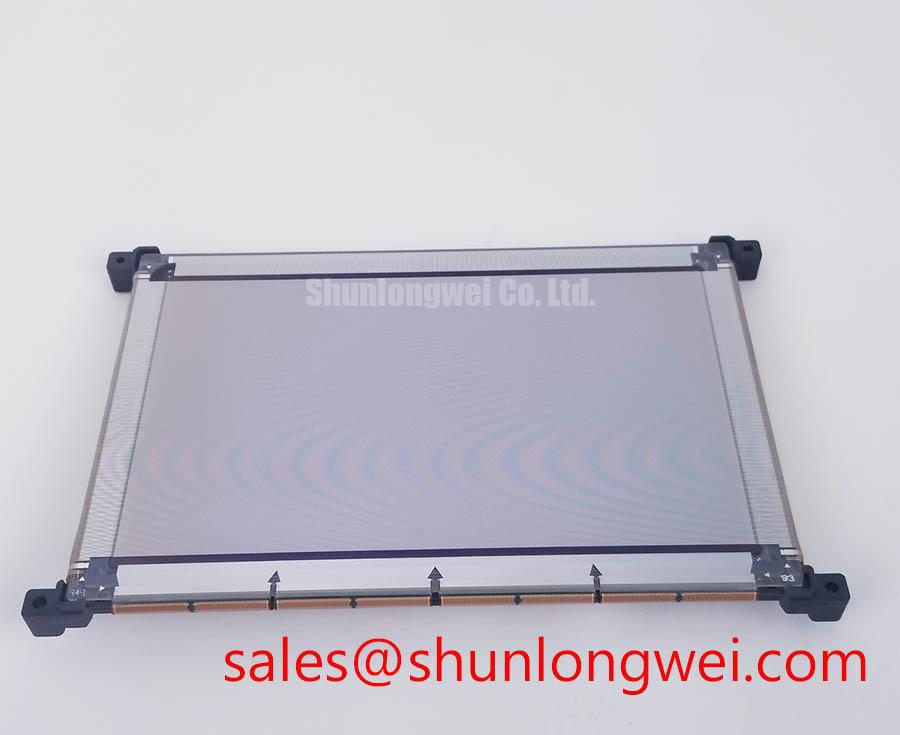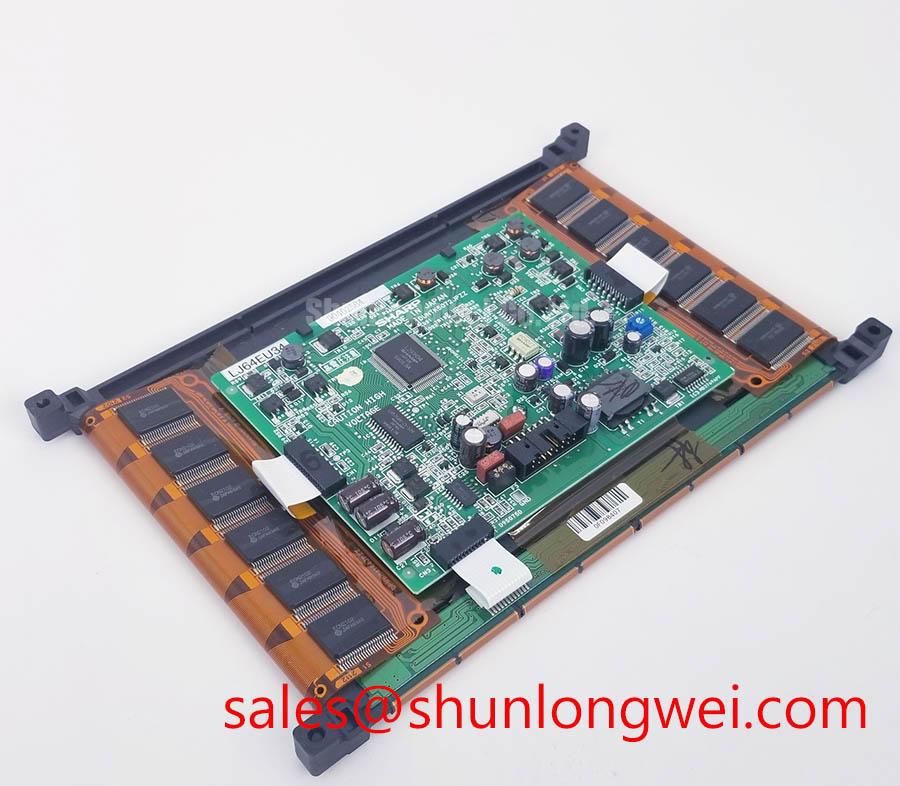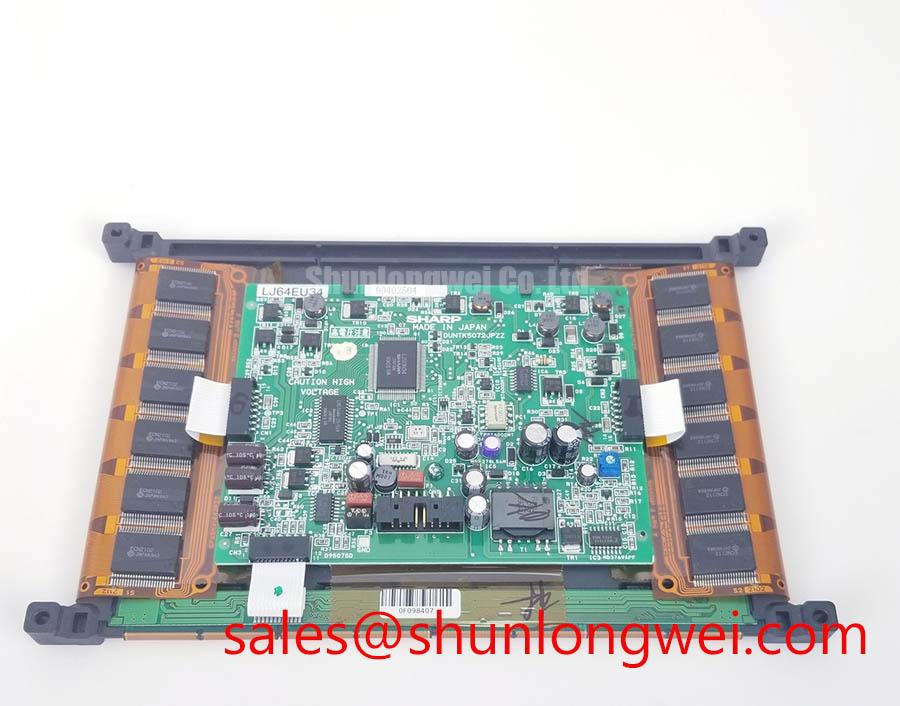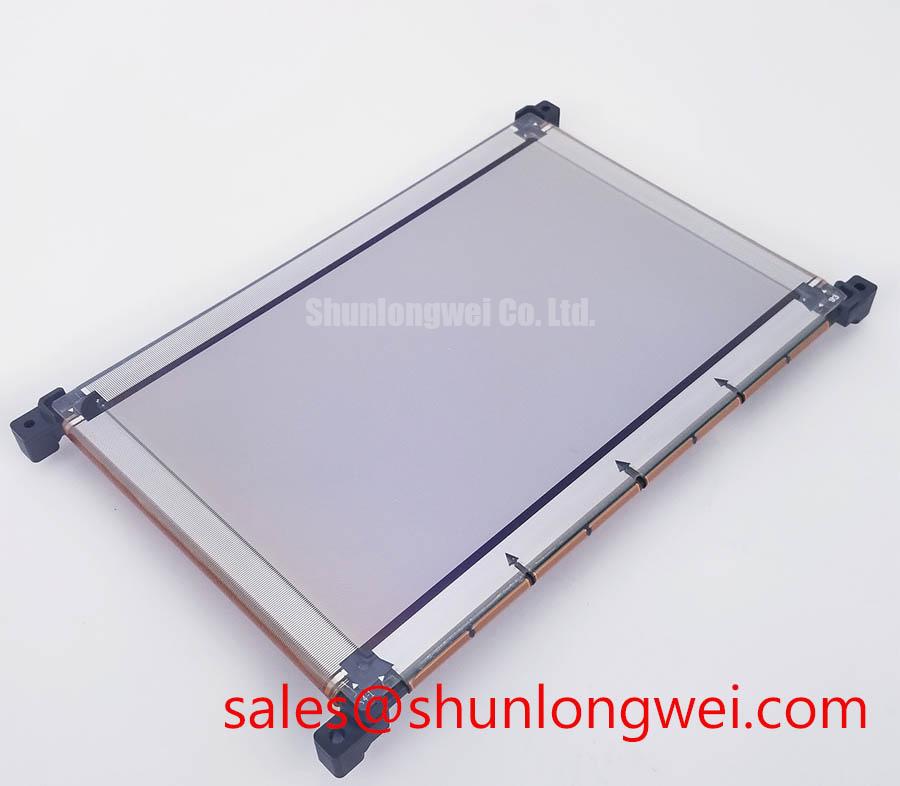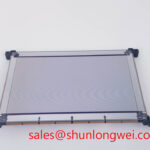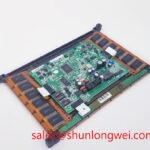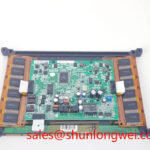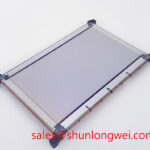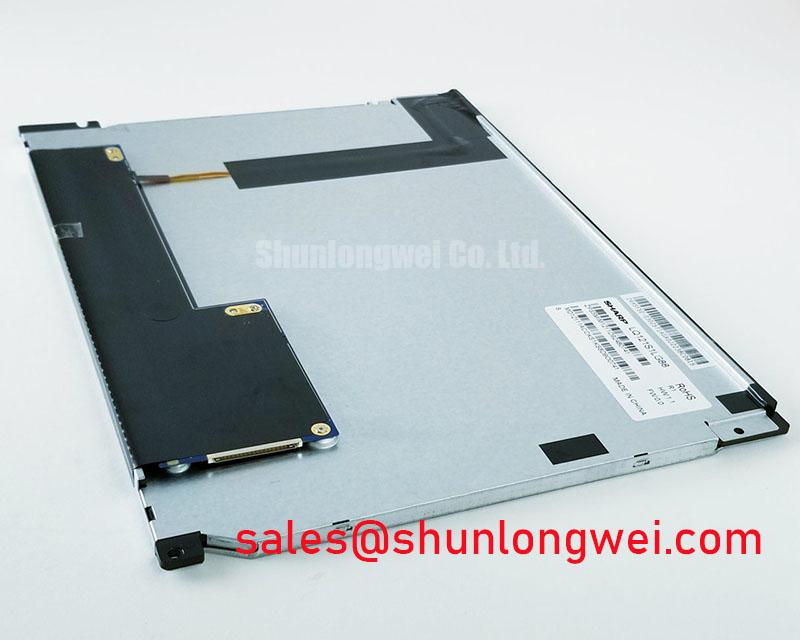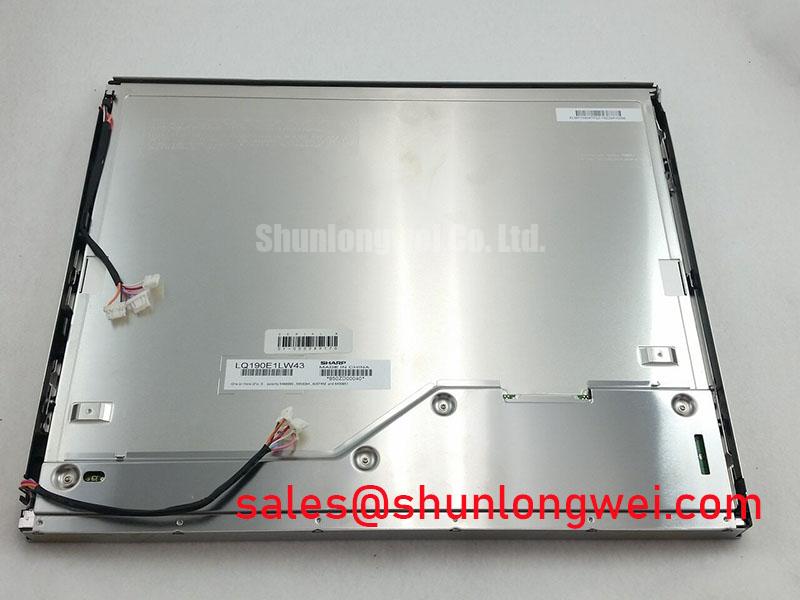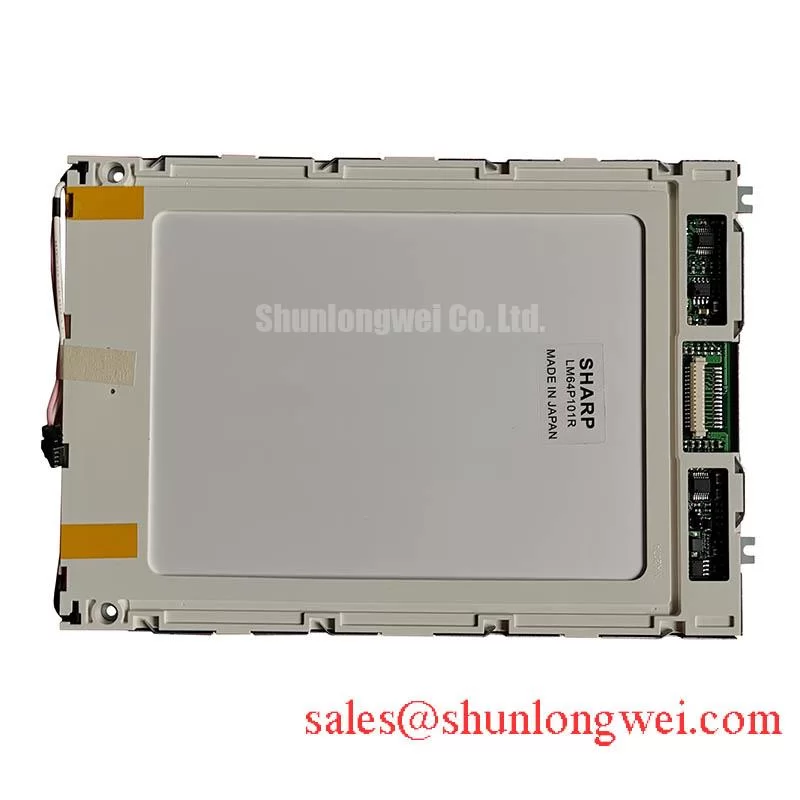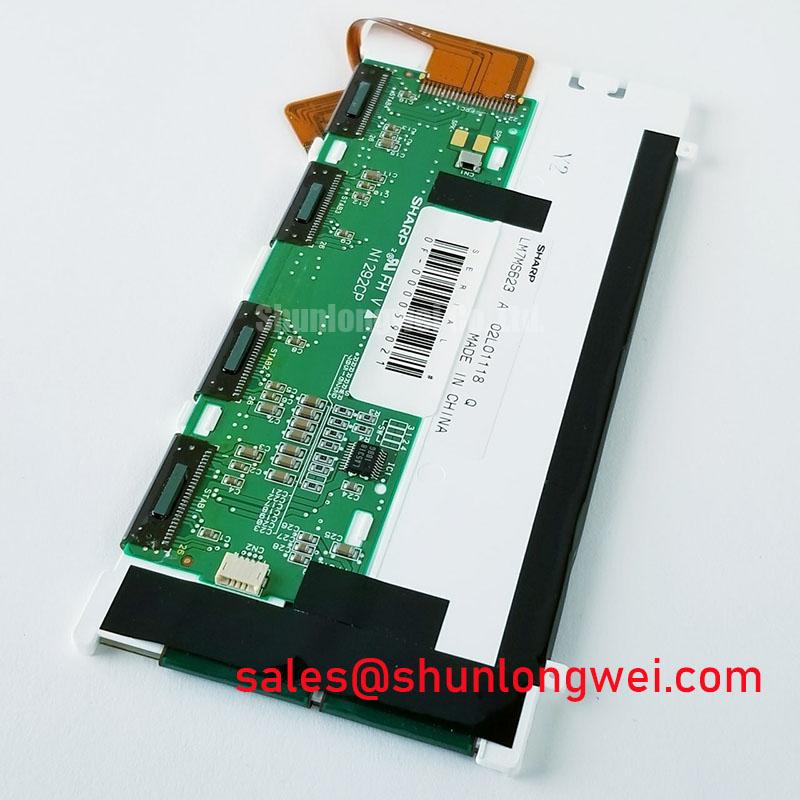Content last revised on November 14, 2025
Sharp LJ64EU34 EL Display: Unmatched Clarity for Legacy System Continuity
From Fading Screens to Flawless Readability: The EL Advantage
For decades, system designers have battled the inherent weaknesses of conventional industrial displays. LCDs suffer from backlight degradation, leading to fading brightness and eventual failure. Their viewing angles are often restrictive, forcing operators into specific positions to accurately read critical data. This compromises both efficiency and safety in environments from factory floors to control rooms. The Sharp LJ64EU34 sidesteps these issues entirely, built on a fundamentally superior architecture for demanding applications. Instead of relying on a failure-prone backlight, its Electroluminescent (EL) technology features self-illuminating pixels. This design ensures perfect black levels, an exceptionally high contrast ratio, and near-flawless readability from almost any angle, solving the core pain points of lesser displays and guaranteeing visual integrity for the long haul.
Parameters Engineered for Enduring Performance
The specifications of the Sharp LJ64EU34 are a direct reflection of its design philosophy: deliver unambiguous visual data with maximum reliability. Understanding these core metrics reveals why it remains a vital component for long-lifecycle equipment. Download the Datasheet for a complete overview.
| Parameter | Value | Engineering Significance |
|---|---|---|
| Display Technology | Electroluminescent (EL) | Provides intrinsic high contrast and eliminates the backlight as a point of failure. Each pixel is a direct light source, ensuring crisp, uniform imagery and a significantly longer operational life compared to CCFL-backlit LCDs. |
| Viewing Angle (L/R/U/D) | 80°/80°/80°/80° (Typ.) | This near-180° field of view guarantees consistent data legibility regardless of operator position. It is critical for multi-person monitoring stations and HMIs installed in space-constrained or awkward orientations. |
| Operating Temperature | -5°C to +55°C | This range certifies the display for deployment in a majority of indoor industrial and control environments, from cool processing plants to warmer manufacturing floors, ensuring stable performance without auxiliary heating or cooling. |
| Resolution | 640 x 400 | This resolution is optimized for the clear presentation of numerical data, status indicators, and basic graphical interfaces common in legacy CNC machinery, process controllers, and medical monitoring systems. |
Navigating Your Selection: EL vs. Modern Alternatives
While modern full-color TFT panels offer higher resolutions, selecting a replacement for a system originally equipped with the LJ64EU34 requires careful consideration. The primary factor is system compatibility. The Sharp LJ64EU34 utilizes a parallel data interface, designed for direct integration with the logic boards of its era. Attempting to retrofit a modern LVDS or eDP display often requires complex and costly adapter boards, introducing new points of failure. Furthermore, the EL display's power consumption profile and physical footprint are unique. A drop-in replacement like the LJ64EU34 avoids extensive re-engineering, saving significant time and validation costs. For new designs requiring similar robustness, a ruggedized industrial display like the KCG057QV1DB-G000 may be a suitable alternative, but for servicing existing assets, sticking with the original technology is the most direct path to restoring functionality.
A Deeper Look at Electroluminescent Architecture
The robustness of the Sharp LJ64EU34 stems from its solid-state, self-emissive design. Think of its screen not as a window with a light behind it, but as a grid of individual, microscopic light bulbs. When a voltage is applied to the phosphor layer sandwiched between two electrode grids, the material itself emits a bright, clear light. This is fundamentally different from a TFT-LCD, which acts as a light shutter, filtering a constantly running backlight. The EL approach yields several key engineering benefits: first, response times are extremely fast, virtually eliminating motion blur in dynamic readouts. Second, the absence of a liquid crystal layer makes it inherently more resistant to shock and vibration, a crucial advantage in heavy machinery and mobile applications. This construction is a cornerstone of its reputation for surviving in environments where other displays falter.
Where Unfailing Visibility is Paramount
The LJ64EU34's unique feature set makes it indispensable in specific industrial domains. Its primary value lies in extending the life of capital-intensive equipment where recertification due to major electronic changes is prohibitively expensive or complex. Key deployment areas include CNC machine tools from the 1990s and 2000s, where its high-contrast monochrome text is ideal for G-code display and operator inputs. It is also prevalent in medical diagnostic equipment, such as early-generation ultrasound and patient monitoring systems, where its wide viewing angles allow multiple clinicians to view data simultaneously without color or contrast shift. For more insights on display durability in harsh settings, explore our guide on engineering displays for heavy machinery.
The Strategic Value of Maintaining Legacy Systems
In an era of rapid technological turnover, the decision to maintain rather than replace is a significant strategic calculation. The LJ64EU34 is a key enabler of this strategy. For industrial operations, the adage "if it isn't broken, don't fix it" holds deep financial truth. A functioning, multi-million-dollar manufacturing line or a certified medical imaging system should not be retired simply because its HMI display has failed. Sourcing a direct-fit replacement like the LJ64EU34 minimizes downtime, eliminates the need for operator retraining on a new interface, and bypasses the costly validation and software integration efforts associated with a full system upgrade. It transforms maintenance from a capital expenditure problem into a predictable operational expense.
Frequently Asked Questions
Is the LJ64EU34 a drop-in replacement for the same model?
Yes, the Sharp LJ64EU34 is designed to be a form, fit, and function replacement for an original panel of the same model number. It features the same physical dimensions, mounting points, and parallel data connector, ensuring a straightforward swap in existing equipment.
Why is this display monochrome (amber)?
The amber-on-black color scheme is a direct result of the specific phosphor chemistry used in this generation of EL technology. This phosphor was chosen for its high luminous efficiency, long lifespan, and excellent contrast, which were prioritized over color reproduction for its target industrial and medical applications.
What does the parallel interface mean for modern integration?
The parallel data interface requires a controller that can directly drive multiple data lines, a common standard in legacy industrial motherboards but rare today. Integrating it into a modern single-board computer (like a Raspberry Pi) would require a custom FPGA or CPLD-based controller to translate modern video signals (like DSI or HDMI) into the parallel format, a non-trivial engineering task.
Is an EL display more reliable than an LED-backlit LCD?
It has a different reliability profile. EL displays are immune to backlight failure, a common fault in LCDs. However, their brightness slowly degrades over a very long operational life (tens of thousands of hours). Modern high-quality LED backlights have a very long lifespan as well, but their failure mode can be more catastrophic. For maintaining legacy systems, the proven longevity and predictable aging of the EL panel is often a known and trusted variable. For guidance on maintaining any industrial display, see our guide to safe cleaning.
What is the typical power consumption?
The datasheet specifies a typical panel power consumption of around 11W. This figure is important for ensuring the host system's power supply unit (PSU) can support the display without being overloaded, a key check when performing repairs or replacements.
Field Notes: Proven Longevity in Action
We have seen the Sharp LJ64EU34 deployed in a 15-year-old plastic injection molding controller, operating 24/7 in a factory with significant temperature swings. While the machine's pushbuttons had been replaced multiple times, the original EL display remained perfectly legible, a testament to its durability. In another instance, a client operating a fleet of specialized medical analysis equipment relies on these displays for their unparalleled immunity to the magnetic fields present in their lab—a condition where LCDs can sometimes exhibit visual artifacts. These cases underscore the LJ64EU34's value in scenarios where replacement is not just about cost, but about certified performance in a known environment.
Designing for the Future by Respecting the Past
When specifying a component like the LJ64EU34, the design consideration shifts from chasing the newest technology to ensuring system integrity and extending asset value. For the engineer maintaining a critical piece of infrastructure, the key is not just to find a screen that "works," but to find one that preserves the original system's validated performance characteristics. The LJ64EU34 offers precisely that: a guarantee of compatibility at the electrical, mechanical, and visual level. Looking forward, any plan to migrate away from such a platform must account for the subtle but critical performance benchmarks set by this EL display—its instant-on nature, its imperceptibility to vibration, and its faultless off-axis readability. These are the metrics that will define the success of any future modernization project.

